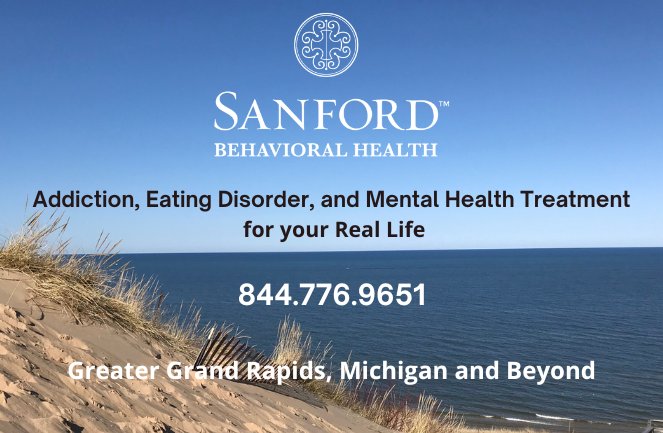Addiction Treatment Alphabet Soup – What Do All Those Letters MEAN?
I remember using acronyms in grade school to help me recall items for upcoming quizzes and tests. One of my favorites was “HOMES”, the names of the Great Lakes: Huron, Ontario, Michigan, Erie and Superior. When I got to college, I still made up acronyms to help me study and memorize for tests. While they would not have made sense to anyone else, they were beneficial to me at the time.
An Industry Rife with Acronyms…
I later entered into the addiction treatment industry – a evocation rife with acronyms. They often swirled around me with dizzying speed. I remember being a new director and going to a meeting at our local community mental health organization. CMH as it was known to everyone in the business. As I sat in the meeting the discussion went something like this, “We need to implement the COCAP and the CODECAT into the SBIRT so that the CQI team can produce favorable measures. We also need to be following ASAM criteria. With the new regulations from ROSC we will be looking at MI trainings as we work toward the development of the next RFP.”
While everyone around me nodded their heads in agreement, I sat there with a smile pasted on my face. Where did I begin to ask questions to clarify what they were talking about?
As I became more familiar with jargons, terminology and acronyms in the field, I told myself to be sensitive to such language when working with clients and families. Certainly we present some acronyms in our own marketing materials. IOP for “intensive outpatient program” and PHP for “partial hospitalization program”. We also include staff credentials. Talk about alphabet soup – LMSW, LPC, CAADC and more, which some people may or may not know.
So, for your reading pleasure, and to take some of the confusion out of the Addiction Treatment world I have compiled a list.
Below are some of the acronyms commonly used in the behavioral health field:
AA
Alcoholics Anonymous – A 12-Step Program for persons dealing with alcohol use disorders.
MASAM
The American Society for Addiction Medicine is composed of over 4,000 physicians, clinicians and associated professionals, dedicated to improving addiction and its treatment and educating physicians and the public.
COD
Co-occurring disorders, formerly known as dual diagnosis, co-occurring disorders describes the presence of both a mental health and substance use disorder.
CADC, CAADC
Certified Alcohol and Drug Counselor, Certified Advanced Alcohol and Drug Counselor.
CCS
Certified Clinical Supervisor- CADC, CAADC and CCS credentials are earned through specific education, experience, supervision and test requirements and maintained by continuing education.
CARF
Commission on Accreditation for Rehabilitation Facilities – A private, non-profit international accreditor of health and human services. Also, CARF officially recognizes health and human service providers as having met standards for quality of service.
CBT
Cognitive Behavioral Therapy – A type of therapy which focuses on a person’s thinking in order to change behavior.
DBT
Dialectical Behavioral Therapy – A type of therapy designed to help people with mood disorders in which they learn about their emotional triggers and develop coping skills.
DSM – 5
Diagnostic and Statistical Manual of Mental Disorders, Fifth Edition – Which is the classification and diagnostic tool of the American Psychiatric Association (APA)
EMDR
Eye Movement Desensitization and Reprocessing – A type of therapy used for the treatment of trauma.
EVP
An Evidenced Based Practice is the practice of health care in which the practitioner systematically finds, appraises, and uses the most current and valid research findings as the basis for clinical decisions.
GA
Gambler’s Anonymous – A 12-Step Program for persons with an unhealthy relationship to gambling.
JCAHO
Joint Commission on the Accreditation of Healthcare Organizations – A private, nonprofit organization whose mission is to continuously improve the safety and quality of care provided to the public. It does this through the provision of health accreditation.
NA
Narcotics Anonymous – A 12-Step Program for persons dealing with drug use disorders.
MHPRP
Michigan Health Professional Recovery Program
LMFT
Licensed Marriage and Family Therapist – A Master’s Level therapist who is trained and licensed to work with family and marital issues.
LMSW
Licensed Master’s Social Work – A person who has a Master’s Degree in Social Work and holds a state license. LLMSW refers to a Limited Licensed Master’s Social Worker who is working to obtain full licensure.
LPC
Licensed Professional Counselor – A person with a Master’s Degree in Counseling Psychology and with a state license. A LLPC is a Limited Licensed Professional Counselor who is working to obtain full licensure.
LLP
Licensed Professional Psychologist – A person with a Master’s Degree in Clinical Psychology and with a state license. A LLP is a Limited Licensed Psychologist who is working to obtain full licensure.
MAT
Medication-Assisted Treatment – Including opioid treatment programs (OTPs), combines behavioral therapy and medications to treat substance use disorders. Examples of this would be the medications: Suboxone and Methadone.
MET
Motivational Enhancement Therapy – A counseling approach that helps individuals enhance their motivation and resolve their ambivalence about change.
MI
Motivational Interviewing is a method that works on facilitating and engaging intrinsic motivation within the client in order to change behavior.
NAMI
National Alliance on Mental Illness – The nation’s largest grassroots mental health organization dedicated to building better lives for the millions of Americans affected by mental illness.
NIDA
National Institute on Drug Abuse – A federal-government research institute whose mission is to “lead the Nation in bringing the power of science to bear on drug abuse and addiction.”
IOP
Intensive Outpatient Program – A type of treatment program in which persons attend services three or more hours a day, three to five days a week. It consists of group and individual therapies.
OP
Outpatient Treatment – Services in which persons attend individual sessions with a therapist. This may include some group services as well. These can vary from a one or more times a week to one or more times a month.
PAWS
Post Acute Withdrawal Syndrome is a set of persistent symptoms that occur after withdrawal from addictive substances.
PHP
Partial Hospitalization Program treatment services occur for up to five to six hours a day, five or six days a week. They usually consist of both group and individual therapies. Despite its name, treatment does not all occur in hospital settings.
PTSD
Posttraumatic Stress Disorder is a disorder that occurs in some persons after they have witnessed or experienced a shocking, scary or dangerous event.
RT
Residential Treatment is the term for treatment services which require a person to stay at an organization for services which occur 24/7. The length of stay for residential treatment can vary from a couple of weeks to up to several months.
ROSC
Recovery Oriented Systems of Care – A coordinated network of community-based services and supports that builds on the strengths and resilience of individuals, families, and communities. The goal is to achieve abstinence from drugs and improved health, wellness, and quality of life for those with or at risk of alcohol and drug problems.
SUD
Substance Use Disorders – The term “substance abuse” has been replaced in the profession by the term “substance use disorders” to describe both addictive and non-addictive dysfunctional substance use in persons. It was changed in 2013 in the DSM-5.
SAMHSA
Substance Abuse and Mental Health Services Administration – A federal government agency that leads public health efforts to advance the behavioral health of the nation. SAMHSA’s mission is to reduce the impact of substance abuse and mental illness on America’s communities.
SMART Recovery
Self Management for Addiction Recovery Training – This group is an international non-profit organization that provides assistance to persons seeking abstinence from addictive behaviors. They use non-confrontational, motivational, behavioral and cognitive methods.
VOB
Verification of Benefits – Is a term used to describe verifying insurance benefits for health services.
WHEW…
And this list is not comprehensive to all the acronyms used in our field. There are additional acronyms that describe the assessments that are used in screening…
MAST
Michigan Alcohol Screening Test
DAST
Drug Abuse Screening Test
SASSI-4
Substance Abuse Subtle Screening Inventory
ASI-MV
Addiction Severity Index-Multimedia Version
DrinC
The Drinker Inventory of Consequences
… and many, many more.
As for the statement that confused me so many years ago at a CMH meeting, here is the translation:
“We need to implement the Complex Conditions Capabilities for Providers tool (COCAP) and the Co-occurring Disorders Education Competency Assessment (CODECAT) into the Screening, Brief Intervention and Referral (services) (SBIRT) so that the Continuous Quality Improvement (CQI) team can produce favorable measures. We also need to be following American Society for Addiction Medicine (ASAM) criteria. With the new regulations from Recovery Oriented Systems of Care (ROSC) we will be looking at Motivational Interviewing (MI) trainings as we work toward the development of the next Request for Proposals (RFP).”
“Whew,” is right…





